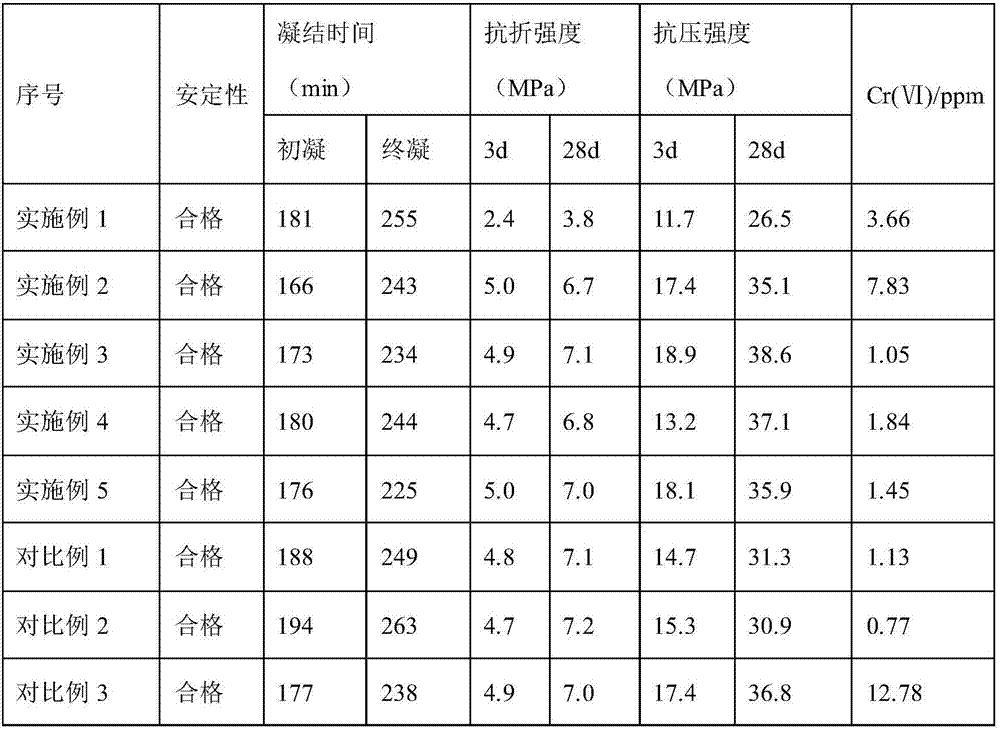Green and environment-friendly cement
A green and environmentally friendly cement and domestic waste incineration technology, applied in cement production, etc., can solve the problems of affecting ecological balance, occupying land, wasting resources, etc., and achieve the effect of reducing consumption, reducing pollution, and good surface activity
- Summary
- Abstract
- Description
- Claims
- Application Information
AI Technical Summary
Problems solved by technology
Method used
Image
Examples
Embodiment 1
[0022] A green environment-friendly cement, which is composed of the following raw materials in parts by weight: 5 parts of clinker, 8 parts of gypsum, 10 parts of sorted domestic waste incineration slag, 20 parts of aluminum profile waste slag, 30 parts of smelting slag, 0.5 part of reinforcing agent, auxiliary 0.02 part of grinding agent, 0.1 part of hexavalent chromium ion reducing agent.
[0023] The clinker is Portland cement clinker.
[0024] The gypsum is natural gypsum.
[0025] The sorted domestic waste incineration slag refers to the domestic waste incineration slag after removing metals and unburned organic matters.
[0026] The aluminum profile waste slag is the waste liquid produced during the surface processing of aluminum profiles such as degreasing, pickling, alkali washing, anodizing, sealing, coloring, etc., and the solid obtained through processes such as sewage treatment, precipitation, and press filtration. waste.
[0027] The smelting slag is steel sla...
Embodiment 2
[0032] A green environment-friendly cement, which is composed of the following raw materials in parts by weight: 20 parts of clinker, 3 parts of gypsum, 20 parts of sorted domestic waste incineration slag, 10 parts of aluminum profile waste slag, 60 parts of smelting slag, 0.1 part of reinforcing agent, auxiliary 0.05 part of grinding agent, 0.01 part of hexavalent chromium ion reducing agent.
[0033] The clinker is Portland cement clinker.
[0034] The gypsum is anhydrite.
[0035] The sorted domestic waste incineration slag refers to the domestic waste incineration slag after removing metals and unburned organic matters.
[0036] The aluminum profile waste slag is the waste liquid produced during the surface processing of aluminum profiles such as degreasing, pickling, alkali washing, anodizing, sealing, coloring, etc., and the solid obtained through processes such as sewage treatment, precipitation, and press filtration. waste.
[0037] The smelting slag is granulated b...
Embodiment 3
[0042] A green environment-friendly cement, which is composed of the following raw materials in parts by weight: 12 parts of clinker, 5 parts of gypsum, 15 parts of sorted domestic waste incineration slag, 15 parts of aluminum profile waste slag, 40 parts of smelting slag, 0.3 part of reinforcing agent, auxiliary 0.025 parts of grinding agent, 0.05 parts of hexavalent chromium ion reducing agent.
[0043] The clinker is Portland cement clinker.
[0044] The gypsum is desulfurized gypsum.
[0045] The smelting slag is ferronickel slag.
[0046] The enhancer is composed of disodium tetraphosphate and calcium metaborate in a weight ratio of 2:1.
[0047] Described grinding aid is tripolyglycerol monostearate.
[0048] The hexavalent chromium ion reducing agent is composed of erythorbic acid and succinimide in a weight ratio of 1:1.
PUM
 Login to View More
Login to View More Abstract
Description
Claims
Application Information
 Login to View More
Login to View More - R&D
- Intellectual Property
- Life Sciences
- Materials
- Tech Scout
- Unparalleled Data Quality
- Higher Quality Content
- 60% Fewer Hallucinations
Browse by: Latest US Patents, China's latest patents, Technical Efficacy Thesaurus, Application Domain, Technology Topic, Popular Technical Reports.
© 2025 PatSnap. All rights reserved.Legal|Privacy policy|Modern Slavery Act Transparency Statement|Sitemap|About US| Contact US: help@patsnap.com

